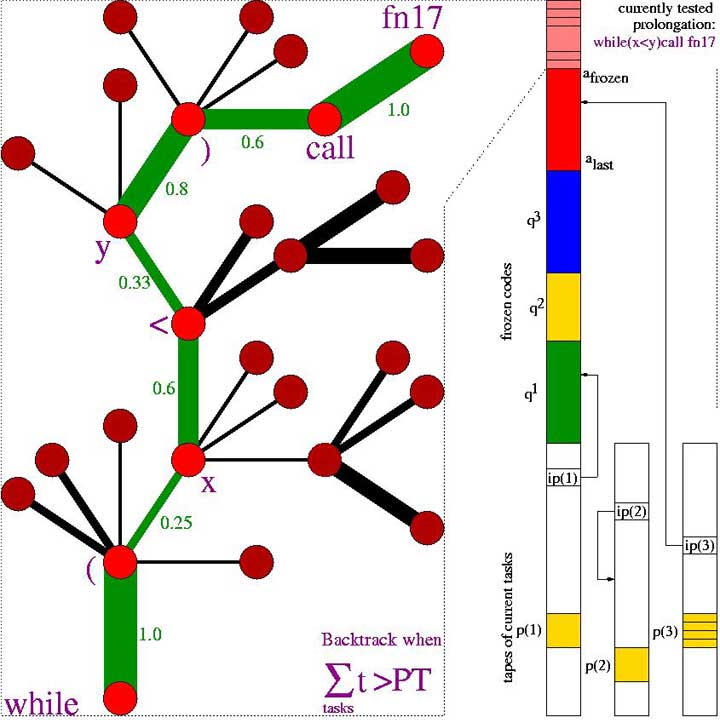How to Learn an Algorithm
History /
Edit /
PDF /
EPUB /
BIB /
Created: March 19, 2016 / Updated: December 21, 2025 / Status: finished / Readability: general / 2 min read (~276 words)
Created: March 19, 2016 / Updated: December 21, 2025 / Status: finished / Readability: general / 2 min read (~276 words)
- J. Good (1965): Informal remarks on an "intelligence explosion" through recursively self-improving (RSI) "super-intelligences"
- 1987: First concrete RSI: Genetic programming recursively applied to itself, to obtain meta-GP and meta-meta-GP
- 1997: Reinforcement learning: Lifelong meta-learning with self-modifying policies
- 2 agents, 2 doors, 2 keys
- Through recursive self-modifications only, went from 300000 steps per trial down to 5000
- A program is constructed such that it has a probability distribution over the actions/functions it should run at any time t
- Some functions amongst this program are specifically designed to modify the probability distribution themselves, which will influence the future probabilistic program behavior
- How can we make sure that this self-referential system learn "useful" modifications?
- An algorithm is used to verify that the reward for the last [X, now] time steps has been higher than the reward for the previous [X - (now - X),X] time steps
- If it is superior, then the newer program is better
- If it is not, then we revert to the previous program
- 2004: Optimal Ordered Problem Solver (OOPS): Time-optimal incremental search and transfer learning in program space
- Branches of search tree are program prefixes)

- Branches of search tree are program prefixes)
- The fundamental deep learning problem
- As you are backpropagating errors from the future to the past, the error diminishes exponentially or explodes exponentially
- 1991: Unsupervised pretraining for hierarchical temporal memory (stack of RNN) -> history compression -> speed up supervised learning
- 1997: Replaced by the long short-term memory (LSTM)
- 2006: Connectionist Temporal Classification (CTC)
- One network which is modeling/prediction the environment while another is executing the actions